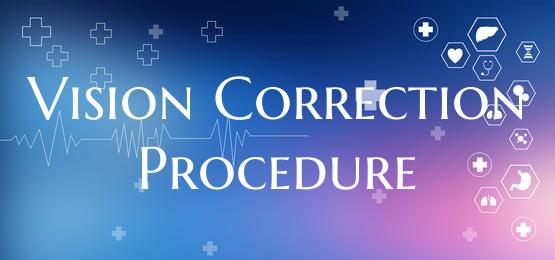
Vision Correction Procedure
Introduction: Vision correction procedures have advanced significantly in recent years, offering solutions for individuals seeking to improve their eyesight and reduce their reliance on glasses or contact lenses. From traditional methods like glasses and contact lenses to more modern approaches like laser eye surgery, there are various options available to correct common vision problems. This article provides an overview of vision correction procedures, including their benefits, risks, and considerations.
Types of Vision Correction Procedures:
1. Glasses and Contact Lenses: - Glasses: One of the most common ways to correct vision problems, glasses come in different shapes, styles, and strengths to address various vision issues like nearsightedness, farsightedness, and astigmatism. - Contact Lenses: These thin, curved lenses placed directly on the eye's surface provide a natural field of vision compared to glasses. They are available in different types, including soft, rigid gas-permeable, and specialty lenses for specific needs.
2. Laser Eye Surgery: - LASIK (Laser-Assisted in Situ Keratomileusis): A popular form of laser eye surgery that reshapes the cornea to correct refractive errors. LASIK is known for its quick recovery time and high success rates, making it a preferred option for many individuals. - PRK (Photorefractive Keratectomy): Another laser eye surgery technique that involves removing the outer layer of the cornea before reshaping it to correct vision. PRK may be recommended for individuals with thin corneas or certain eye conditions.
3. Implantable Lenses: - Phakic Intraocular Lenses: These implantable lenses are placed inside the eye without removing the natural lens, ideal for individuals with high refractive errors who may not be suitable candidates for laser eye surgery. - Refractive Lens Exchange: Also known as clear lens extraction, this procedure involves replacing the eye's natural lens with an artificial lens to correct refractive errors like presbyopia or high degrees of myopia/hyperopia.
Considerations and Risks: Before undergoing a vision correction procedure, individuals should consider the following factors: - Suitability: Not everyone is a suitable candidate for every vision correction procedure. Factors such as age, eye health, prescription stability, and lifestyle choices may influence the recommended treatment. - Risks: While vision correction procedures are generally safe and effective, there are potential risks and side effects to be aware of, such as dry eyes, glare, halos, or overcorrection/undercorrection of vision. - Consultation: It's crucial to consult with an experienced eye care professional or ophthalmologist to discuss options, potential outcomes, and any concerns before proceeding with a vision correction procedure.
Conclusion: Vision correction procedures offer a range of options for individuals looking to enhance their vision and reduce their dependence on corrective eyewear. Whether through glasses, contact lenses, laser eye surgery, or implantable lenses, there is a solution to address various vision problems effectively. By understanding the types of procedures available, considering key factors, and consulting with eye care specialists, individuals can make informed decisions to improve their vision and overall quality of life.